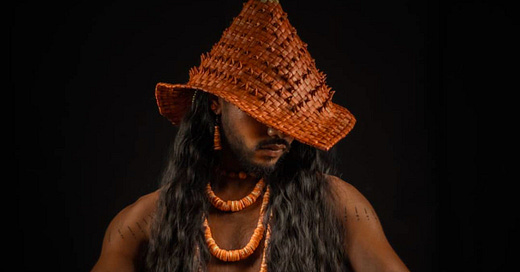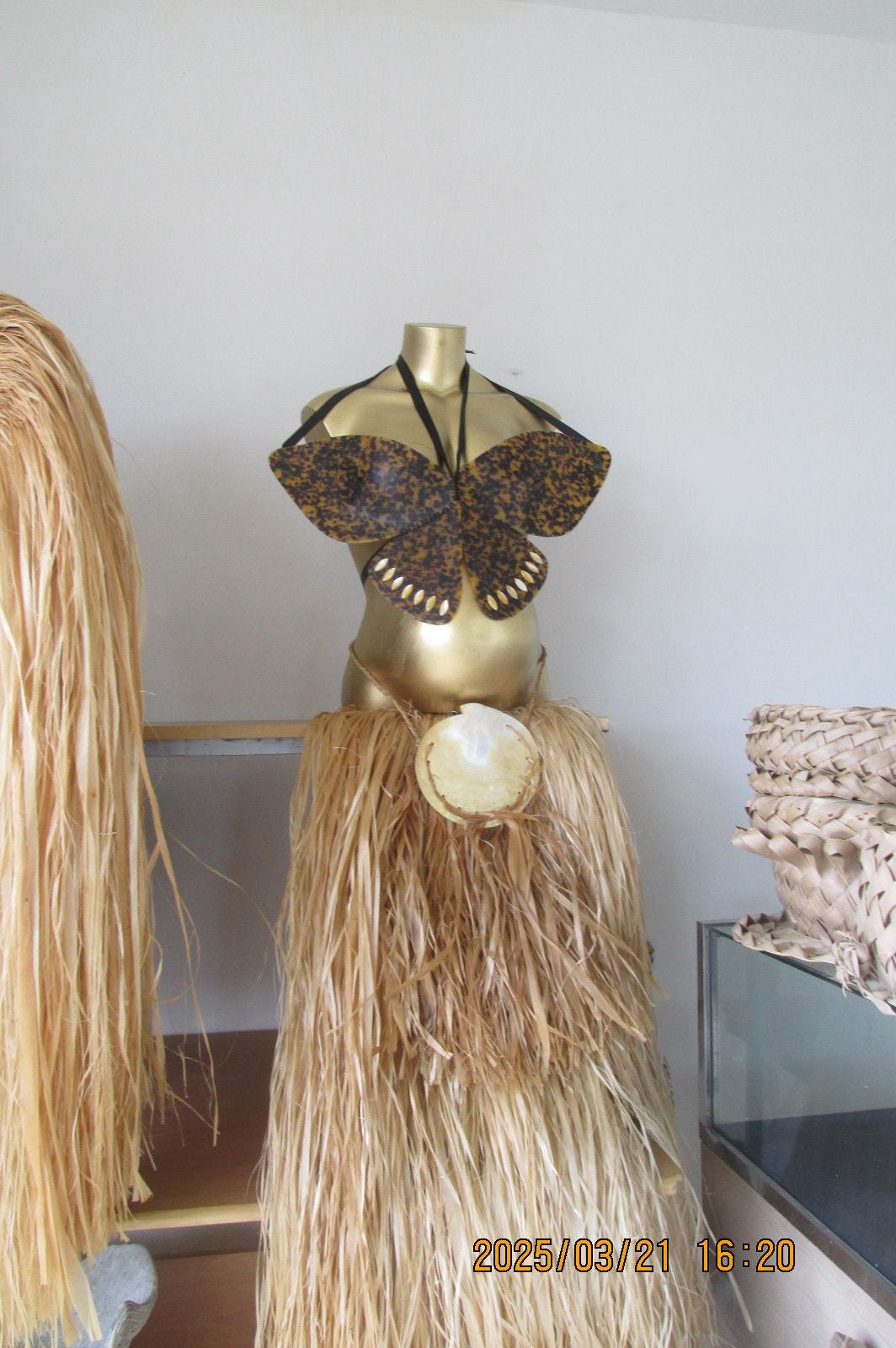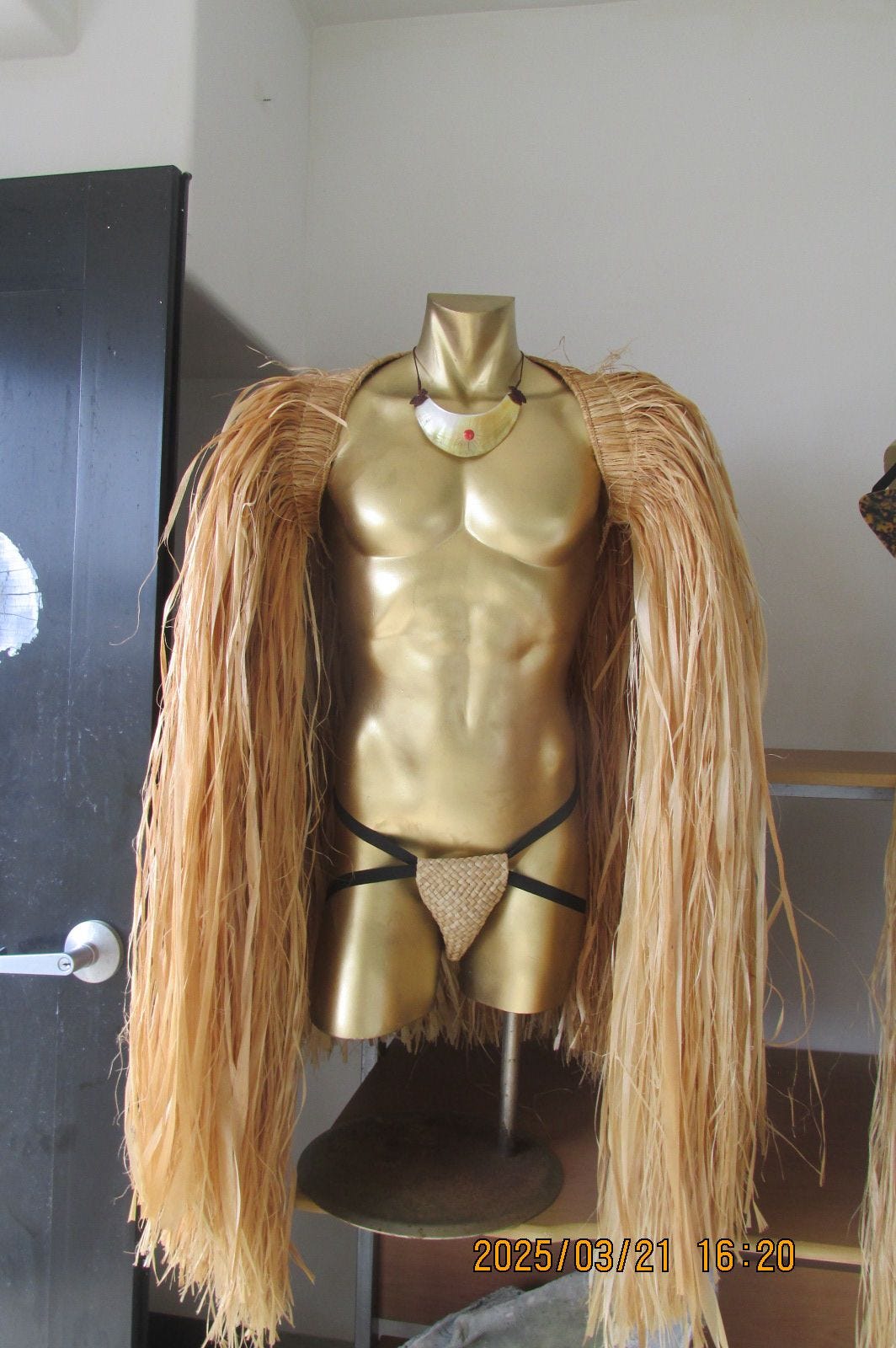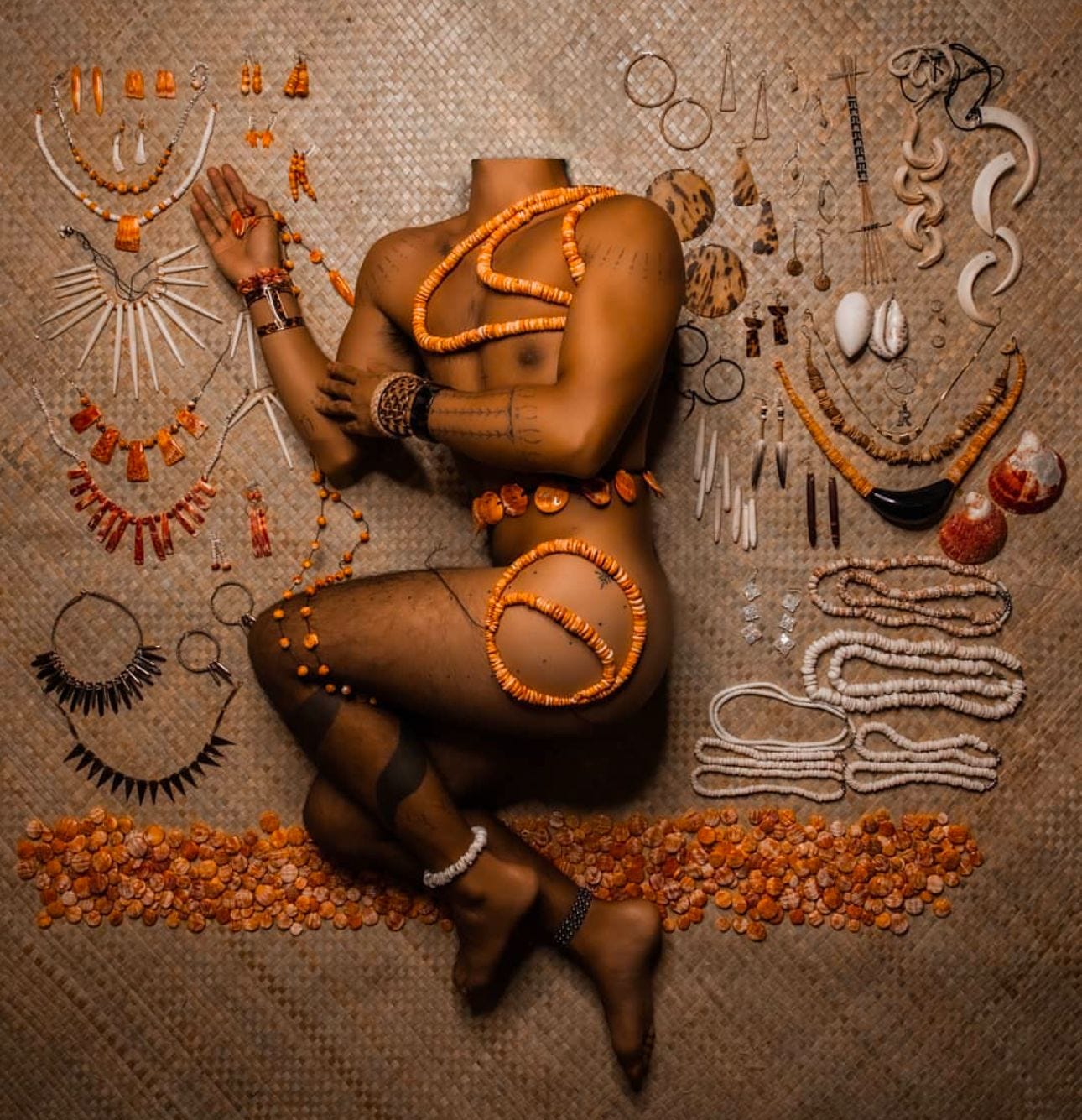Indigenous Fashion
A journey into the world of art and activism is deeply intertwined with Roquin Siongco’s cultural heritage, personal identity and lifelong passion for creation. What started as childhood curiosity transformed into a powerful form of artistic expression, combining past with the present.
A Thread from the Past
Siongco’s artistic roots traced back to their grandmother, the eldest of 16 siblings, who learned to sew to help provide for the family. Growing up under her guidance, Siongco often found inspiration surrounded by sewing machines and fabric, learning the craft from an early age.
Their artistic journey began in a CHamoru class in third grade when Señora Flores taught the art of weaving by demonstrating how to make a grasshopper out of coconut leaves.
“I remember thinking, ‘What…these are just made out of leaves?’ It blew my mind,” Siongco recalled.
They moved to Washington at 12, which made coconut leaves inaccessible. This led to an exploration of other art forms such as origami, different weaving techniques and fashion, which eventually became integral to their creative path.
Art, Identity and Activism
As a queer CHamoru artist, an exploration of their identity became a constant part of Siongco’s experience living in the states.
“In Guam, I could be CHamoru, but I had to kind of hide this part of me. In the States, I could be myself but always had to explain, ‘What’s a Guam?’” This experience taught them the importance of being true to yourself and expressing it openly.
Their work embodies the concept of “Artivism,” which is using art as a tool for activism.
“Before I ever used the term [artivism], it was already around. It describes artists whose work is embedded in a political worldview,” Siongco explained. Each piece addresses cultural identity, colonial history and environmental concerns, encouraging reflection and deep conversation.
Weaving the Past and Future
“A lot of our history has been affected by colonialism, so I make it a point to consider what is truly from Guåhan or the Marianas,” Siongco said.
By blending traditional CHamoru techniques with modern materials, their goal was to challenge rigid definitions of authenticity.
“I hate the word ‘authenticity’ because I’m CHamoru—whatever I create, is that not CHamoru? As long as our people see, appreciate, and value it, and see a little bit of themselves in it, I think we’re cool,” Siongco added with a laugh.
Honoring the Past, Creating for the Future
Many of Siongco’s works are responses to learning more about CHamoru culture and history. One piece that holds particular significance is “Tai Ulu,” which explored the connection between the living and the dead.
They referred to an ancient traditional ceremony practiced in the past. “Today, that practice has faded. It made me reflect on how weaving, my primary medium, eventually returns to the earth,” Siongco explains. “Tradition doesn’t lie in the object but in the practice of making it.”
Siongco’s work has been displayed at institutions like the Tacoma Art Museum, the Seattle Washington Museum and the Guam Museum.
Guma’ Gela: A House of Difference
In 2018, Siongco co-founded Guma’ Gela, which translates to “house of difference.” Initially formed by a group of CHamoru queer artists in Washington state, their collective has since created spaces for artistic expression and cultural dialogue.
“We reclaimed the word ‘difference’ as something positive, reflecting both our CHamoru and queer identities,” Siongco shares.
The Challenges and Rewards of Creation
For Siongco, the biggest challenge in the creative process is mindset. “I like to plan things out, but that doesn’t always work. I always say, ‘If you can dream it, we can weave it,’” Siongco says.
Siongco reflects,“I never imagined that playing with leaves as a kid would lead to international exhibits. But every step along the way, I kept an open mind and heart.”
Words of Wisdom
Siongco’s advice to aspiring artists is to embrace imperfection. “It’s hard to not be a perfectionist. When you put your work out there, you don’t always hear the reactions you want. But what we did hear was that our work brought people joy. So remember the joy,” they said.
For Siongco, art is not just about creation–it’s about connection, history and carving a space where identity and tradition are celebrated. “Part land, part sea, all ancestry,” Siongco said.








